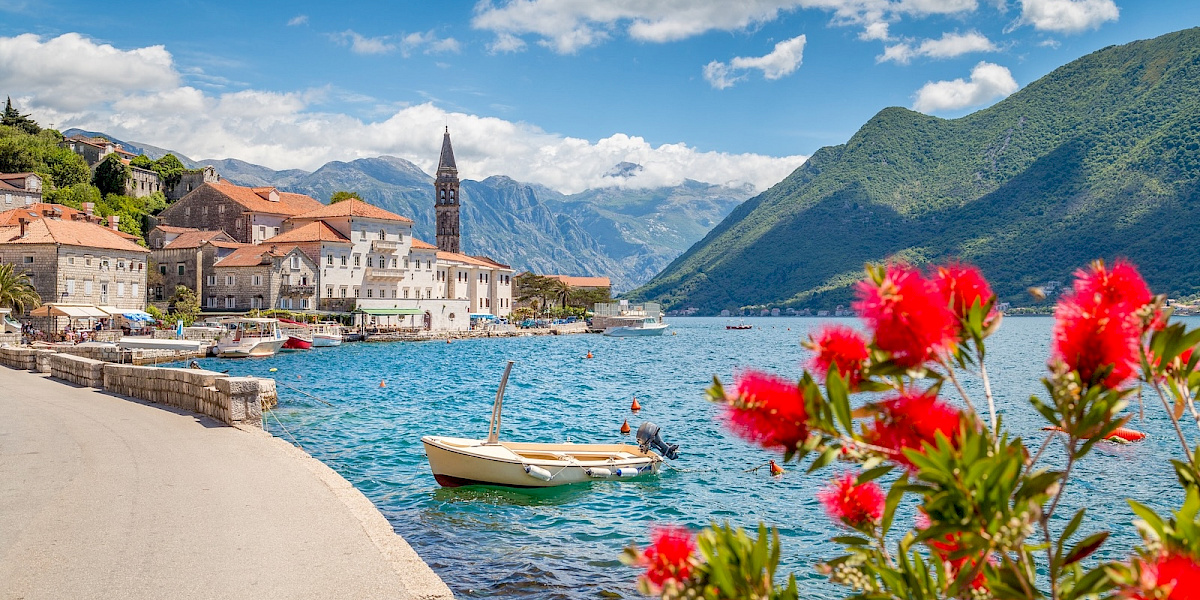Geography and Climate
The Bay of Kotor, or Boka Kotorska, is a 28-kilometer-long bay characterized by its winding shape and 107.3 kilometers of shoreline. Nestled between the Dinaric Alps, the Orjen mountains to the west and Lovćen mountains to the east, the bay is a ria, a submerged river valley. It’s composed of several smaller bays connected by narrow channels:
-
•
Bay of Tivat: The outermost part of the bay.
-
•
Bay of Herceg Novi: Located at the main entrance to the Bay of Kotor.
-
•
Bay of Risan: Situated to the northwest.
-
•
Bay of Kotor: Located to the southeast.
The Verige Strait is the narrowest part of the bay (340 meters wide). The region has a humid subtropical climate, but its unique topography and high mountains result in it being one of Europe’s wettest areas. The climate is characterized by:
-
•
High Precipitation: Particularly in the littoral Dinaric Alps and Accursed Mountains.
-
•
Seasonal Variation: Wet winters, dry summers, and significant rainfall often accompanying thunderstorms in November.
-
•
Winds: The strong cold Bora winds in winter and warm humid Jugo winds.
Early and Medieval Periods
-
•
Slavs settled in the Balkans in the 6th century, and South Slavic tribes controlled much of Dalmatia.
-
•
The area was under the rule of the Vlastimirović dynasty and was part of the principalities of Doclea and Travunia.
-
•
In the mid-9th century, the area came under the influence of the Byzantine Empire.
-
•
The region was briefly under Serbian rule, including the Nemanjić dynasty, and the area saw the construction of religious structures like the Church of Saint Luka in Kotor and the establishment of the Eparchy of Zeta on Prevlaka.
Venetian Rule (1420-1797)
-
•
The city of Kotor came under Venetian rule in 1420, and the Venetians controlled the Bay until 1797.
-
•
Northern parts of the bay saw influence from the Kingdom of Bosnia and the Ottoman Empire.
-
•
During this era, there were frequent conflicts, most notably between the Venetians and the Ottoman Empire.
-
•
Perast had a notable military victory against the Ottoman Empire in 1654.
-
•
During the Venetian period, the population was divided with Catholic majority in the Venetian controlled parts and Orthodox in the Ottoman area.
Modern Era
-
•
The region came under Habsburg rule briefly after the fall of the Venetian Republic.
-
•
Later became part of the Napoleonic Kingdom of Italy and the Illyrian Provinces.
-
•
There was a brief unification with Montenegro in 1813.
-
•
In 1815, the region was annexed by the Austrian Empire as part of Dalmatia.
-
•
The region was bombed during World War I before Austrian-Hungarian forces defeated Montenegro.
-
•
Became part of the Kingdom of Serbs, Croats and Slovenes which was later named Yugoslavia, after World War 1.
-
•
Occupied by Italy in World War II, it was incorporated into the Governorate of Dalmatia.
-
•
Since 1945, it has been part of the People’s Republic of Montenegro.
-
•
The Bay’s strategic importance led to various conflicts and changes in governance throughout its history.
Culture
The Bay of Kotor region boasts a rich cultural heritage with a long maritime tradition.
-
•
Religious Diversity: The area is home to numerous Orthodox and Catholic churches and monasteries.
-
•
Maritime Heritage: Historically, Boka had a strong fleet and a notable naval academy, the Scuola Nautica.
-
•
UNESCO World Heritage Site: The Natural and Culturo-Historical Region of Kotor is a designated UNESCO World Heritage Site since 1979.
-
•
Bocchesi People: Historically, inhabitants of the Bay, regardless of religion, were referred to as Bocchesi.
-
•
Fortifications: Long walls extend from the fortified old town of Kotor to the castle of Saint John, showcasing the area’s strategic military importance.
Demographics
The Boka region’s population is made up of people of South Slavic heritage, including those who identify as Montenegrins, Serbs, or Croats.
-
•
2011 Population: The total population was 67,456 according to the 2011 Montenegro census.
-
•
Ethnic Composition: The population was primarily Serbian (39.2%) and Montenegrin (38.7%), with a smaller percentage of Croats (6.7%).
-
•
Religious Distribution: The population is predominantly Eastern Orthodox, while there is also a significant Roman Catholic community.
This summary provides a comprehensive overview of the Bay of Kotor, covering its geography, history, culture, and demographics. It is formatted with headings and subheadings for better readability.

